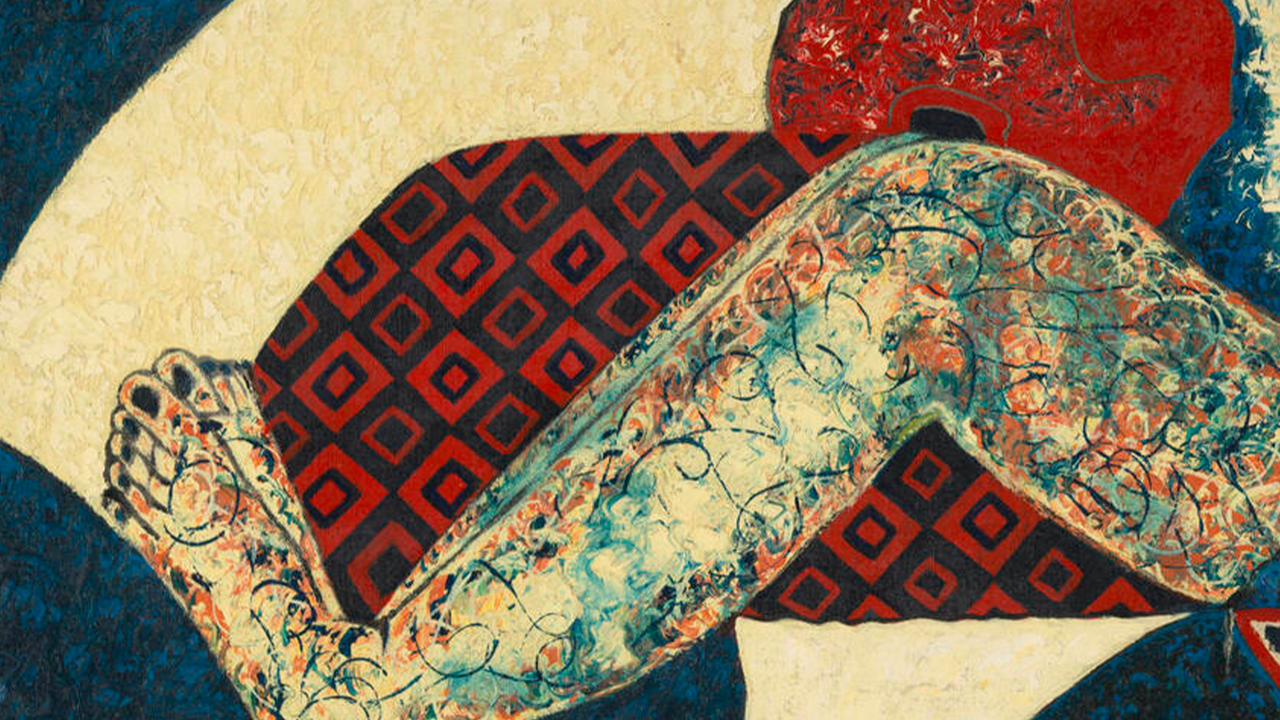Nina Fischer and Maroan el Sani
Although Nina Fischer and Maroan el Sani called their exhibition a retrospective, it looked more like a group show exploring the relationship between art and science: the artist as researcher, archaeologist and inventor. It included samples of 'thought photography', precognition test apparatus, the results of so-called aura research (unearthing the techniques of Kirlian photography) and studies for an invention: a clock and multi media project entitled Millenniumania (1997) that compares the 24 time-zones of the world according to the walking velocities of pedestrians measured and monitored in real time around the globe.
Each work was given a room. The video Be Supernatural (1995) documented the artists taking part in an instructive training course - as if trapped in something like a Chroma-Key studio for a NASA film - to promote a supposedly non-electronic telecommunication tool, a piece of thin elongated paper coloured in three stripes. One sequence recalls their paranormal childhood. Be Supernatural is always shown in rooms (or once in a truck's container) decorated with the stripe's colour scheme, which combines the atmosphere of community youth centres with corporate lounge areas.
The most successfully realised room was the display of Klub 2000 (1998), for which the artists photographically documented the street entrances to - now mostly defunct - illegal dance clubs in Berlin's Mitte district. Although the doorways look the same as any other unrefurbished warehouse or garage by day, they are characteristic enough to be recognised by clubbers who have been there. A short feature film sketched a cinematic utopia of youth reclaiming the city's Eastern quarter of Marzahn as new ground for nightlife. These two intersecting visions of urban life at the close of the century - the entrances of 'Phantom Clubs' as ghostly traces of a lost interventionist subculture in the centre and its imaginary evacuation of the once shiny emblem of Socialist-Modern mega housing on the periphery - were shown in a room which echoed a GDR-style club filled with a brown leather sofa, a carpet, a TV monitor and a VCR which showed the film and the photographs. A strange phenomenon - that the clubs in question are usually located on the second floor and have windows facing the street - was echoed in the Kunsthaus Dresden, where the row of windows face the decaying prefab facades of east German Plattenbau housing.
Like odd jewels of amateur research, Fischer's and el Sani's works radiate a willingness to submit everyday social phenomena to a roguish scrutiny, all of which, that, lacks any coherent methodology. Their phenomena-hopping approach, which constantly switches contexts at the level of content and media, blows the artist-as-author into debris. Retrospectives inevitably promote a thinking articulated into categories like 'development' or 'history'. But these expectations are not met: each project of Fischer and el Sani responds to an internal logic rather than an overarching scheme.















